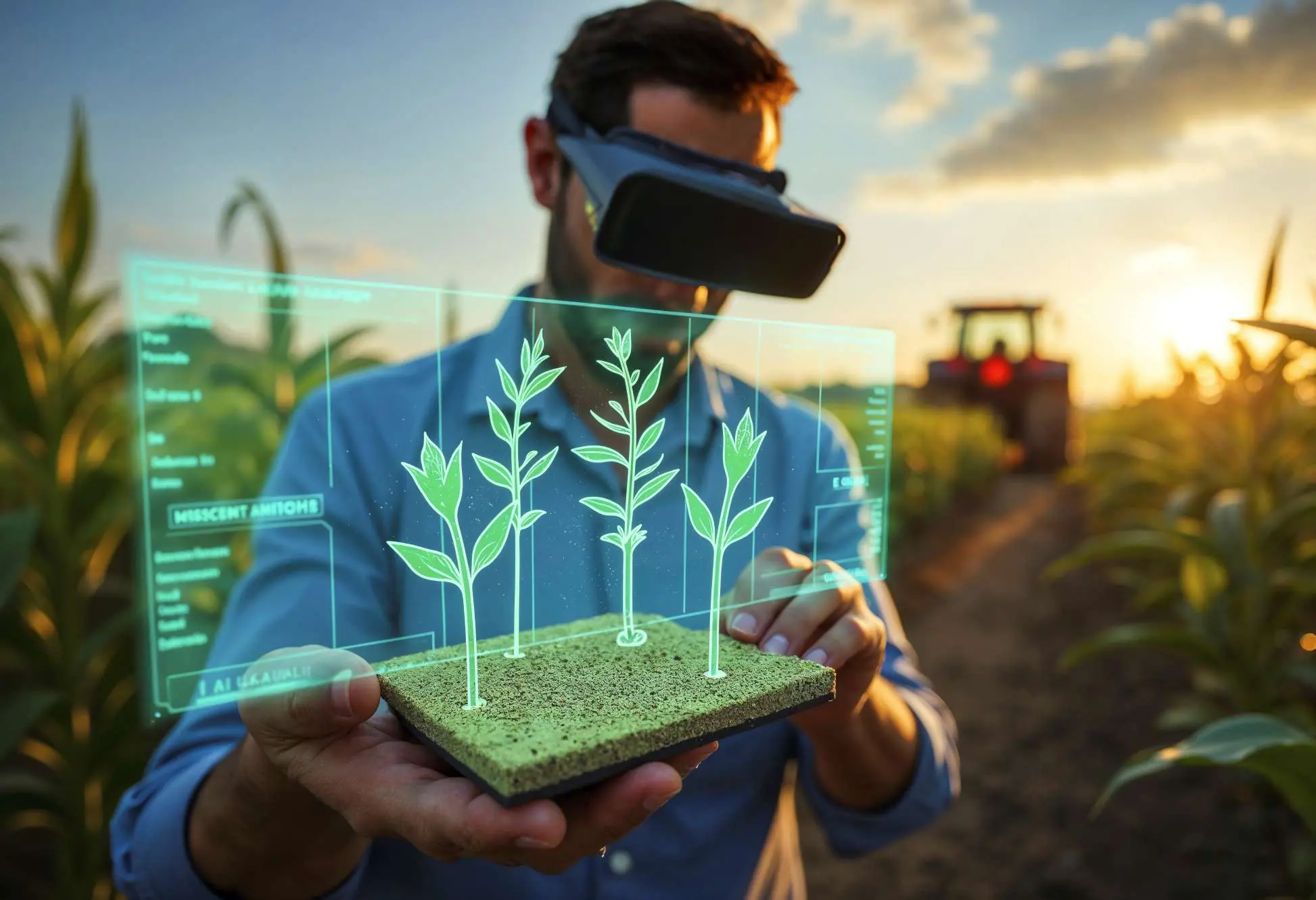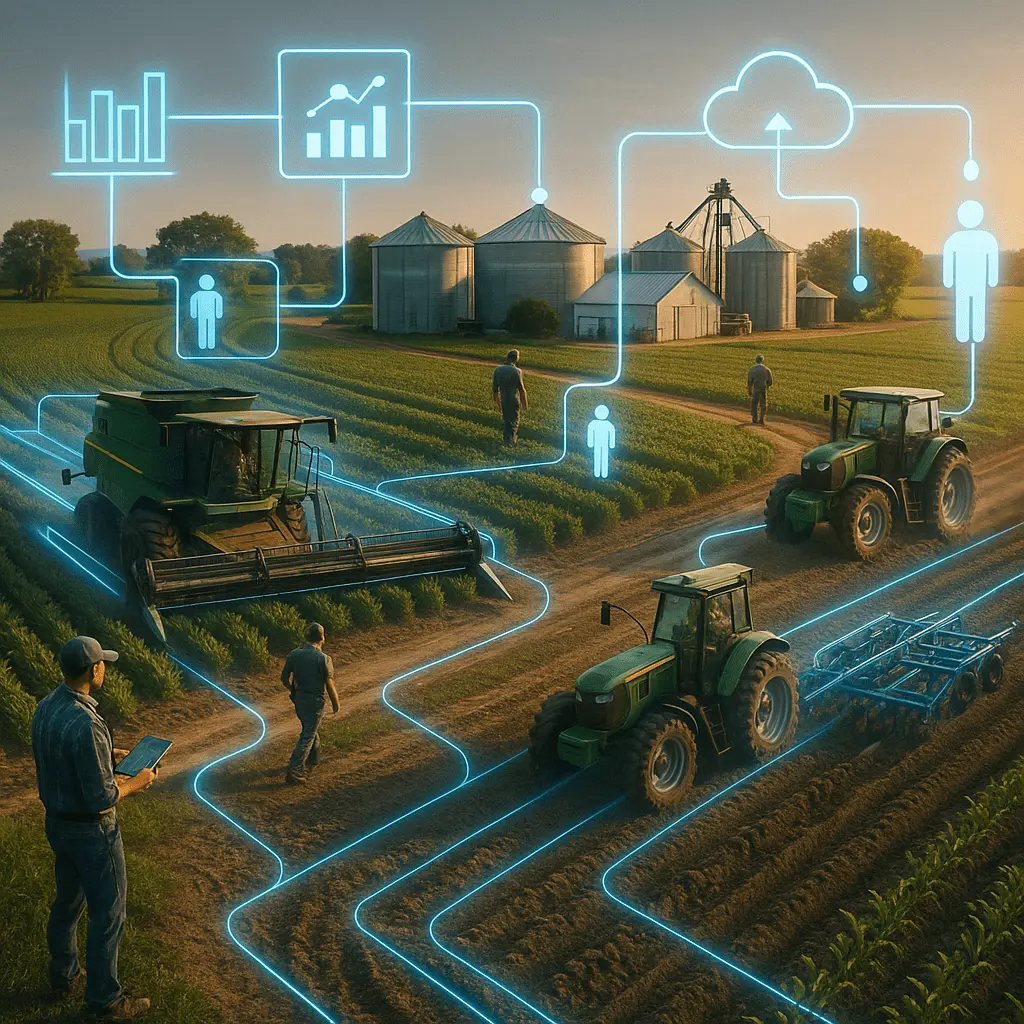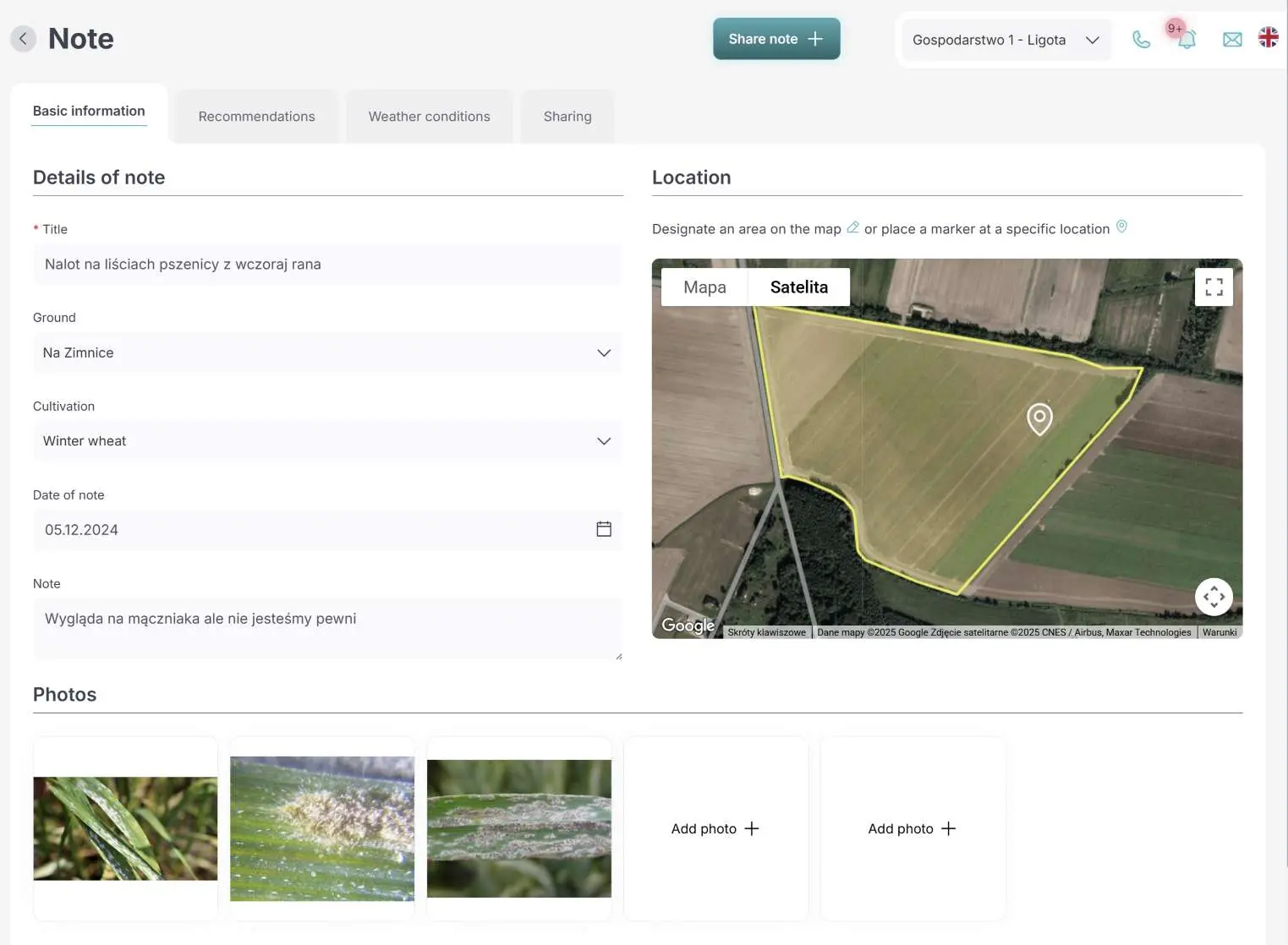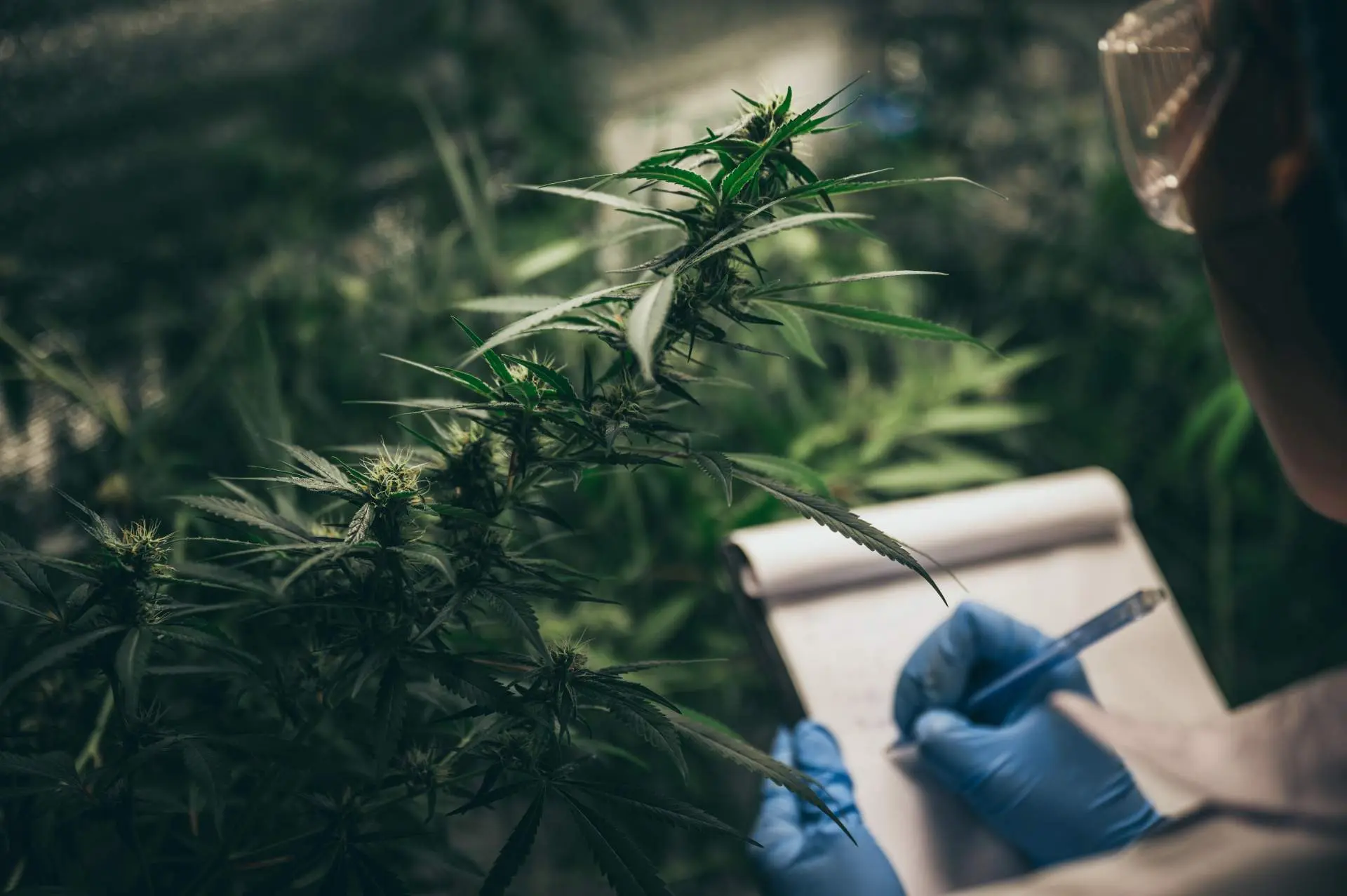What is Agriculture 5.0, and How Does It Differ from Agriculture 4.0?
Agriculture 5.0 represents the next stage of agricultural development, combining modern digital technologies with the principles of sustainability and personalized agricultural production. While Agriculture 4.0 focused on automation, the Internet of Things (IoT), and data analytics, Agriculture 5.0 introduces more advanced technologies such as artificial intelligence (AI), collaborative robots (cobots), and sophisticated biotechnological systems.
The key differences between Agriculture 4.0 and 5.0 are:
- Personalization – Technologies enable production to be tailored to individual needs, e.g., precise dosing of fertilizers and plant protection products.
- Sustainability – Greater emphasis on eco-friendly farming methods and minimizing environmental impact.
- Integration of Humans and Machines – Cobots support farmers by eliminating the most burdensome and hazardous tasks.
- Enhanced Data Analysis – AI assists in real-time decision-making, optimizing farm management.
Equipment for Agriculture 5.0
Modern farms are already implementing elements of Agriculture 4.0, utilizing the following equipment:
- Agricultural Drones – Monitor crops, assist in precise fertilization and spraying.
- Autonomous Agricultural Machinery – Tractors, harvesters, and crop care robots. Automatic navigation and vehicle control are even integrated into the FarmPortal app.
- Smart Irrigation Systems – Optimize water usage based on soil analysis.
- IoT Sensors – Monitor soil conditions, weather, and plant health.
- AI and Big Data Systems – Analyze data to optimize production. Examples include FarmPortal and the entire FarmCloud platform.
Benefits of Agriculture 5.0
- Increased Production Efficiency – Precision farming minimizes losses and increases yields.
- Resource Savings – Smart systems help reduce water, fertilizer, and pesticide consumption.
- Better Working Conditions – Automation and cobots relieve farmers, reducing injury risks.
- Reduced CO2 Emissions – Intelligent management supports climate protection.
- Food Security – Advanced technologies enable better control of food quality and origin.
Costs of Implementing Agriculture 5.0
The costs of implementing modern technologies in agriculture can be high. For example:
- Agricultural drones: from 10 000 to 100 000 PLN
- Autonomous tractors: starting at 500 000 PLN
- AI farm management systems: 50 000 – 200 000 PLN
- IoT sensors: from a few to several thousand PLN, depending on farm scale
In Poland, farmers can access various funding opportunities for the development of Agriculture 4.0 and 5.0, including digitization, automation, and the use of modern technologies. The most significant programs include:
- Rural Development Program (PROW 2014–2020, 2023–2027) – Grants for purchasing innovative machines, precision farming systems, and digital technologies.
- National Recovery Plan (KPO) – Support for agricultural digitization, including investments in smart farm management systems.
- EU and National Funds – Agencies such as the Agency for Restructuring and Modernization of Agriculture (ARiMR) offer grants for farm modernization and precision farming development.
- Tax Incentives and Preferential Loans – Financing for purchasing drones, IoT sensors, and AI software for crop management.
Funding opportunities help farmers implement modern technologies, increasing farm efficiency and competitiveness.
Challenges of Agriculture 5.0
- Investment Costs – High financial outlays can be a barrier for small farms.
- Technology Dependence – System failures and malfunctions can disrupt production.
- Data Security – Risk of cyberattacks on farm management systems.
- Lack of Skilled Workforce – Farmers need to learn how to operate new technologies.
How Prepared Are Polish Farms for Agriculture 5.0?
Polish agriculture is gradually adapting to new technologies, but some challenges remain:
- Internet Access – Many regions lack adequate digital infrastructure.
- Initial Capital – Small farms struggle to finance innovations.
- Technological Awareness – A limited number of farmers are familiar with and utilize Agriculture 5.0 technologies.
How Does Agri Solutions’ FarmPortal Support Agriculture 5.0 Implementation?
FarmPortal is a modern digital platform developed by Agri Solutions to facilitate the adoption of Agriculture 5.0 technologies. It offers:
- Real-Time Monitoring – Sensors and drones collect data on soil, moisture, and plant health.
- Advanced AI Analytics – Algorithms assist farmers in making better decisions regarding crops and livestock.
- (Integrated Farm Management)[https://farmportal.eu/functions] – FarmPortal consolidates information on machinery, fields, and resources in one place.
- Farmer Support – An AI-based advisory system provides personalized recommendations.
Thanks to FarmPortal, implementing Agriculture 5.0 becomes easier and more cost-effective for various types of farms.
Is Agriculture 5.0 Suitable for Small and Medium-Sized Farms?
Yes, Agriculture 5.0 can be applied to small and medium-sized farms, though implementing advanced technologies may require a gradual approach. Key benefits for smaller farms include:
- Precise Resource Management – Technologies such as IoT sensors and drones optimize fertilization, irrigation, and plant protection, reducing costs.
- Automated Support Systems – Smart irrigation systems and autonomous robots improve operations with limited labor.
- Digital Platforms – Solutions like FarmPortal help monitor and manage farms without large infrastructure investments.
- Access to Data and AI – Small farms can use applications that analyze data, aiding in more informed agricultural decisions.
Implementation costs pose a challenge, but available grants and financing allow small farms to gradually invest in Agriculture 5.0 technologies.
How to Begin Implementing Agriculture 5.0?
Implementing Agriculture 5.0 requires careful planning and investment in modern technologies. To maximize its potential and avoid unnecessary costs, follow these steps:
1. Farm Needs Analysis
- Identify key challenges and areas for improvement through new technologies (e.g., water savings, field automation, precision fertilization).
- Assess which processes can be automated and optimized.
- Check the availability of digital infrastructure, such as stable internet and IoT devices.
2. Develop a Strategy and Choose Technologies
- Define investment priorities (e.g., drones, smart irrigation, soil monitoring).
- Select appropriate data management platforms like FarmPortal or FarmCloud to facilitate technology integration.
- Review available grants and financing options.
3. Pilot Implementation
- Start by testing selected solutions on a small scale, e.g., one part of the farm.
- Monitor the efficiency of implemented systems and analyze collected data.
- Adjust solutions to meet farm-specific needs.
4. Staff Training
- Conduct training for farmers and machine operators to effectively use new tools.
- Ensure access to technical support and software updates.
5. Scaling and Optimization
- Expand the use of successful technologies across the entire farm.
- Analyze real-time data and implement optimizations in production processes.
- Gradually introduce more advanced AI systems and automation.
6. Continuous Monitoring and Development
- Regularly analyze results and adjust strategies.
- Invest in new solutions to stay competitive.
- Collaborate with tech companies and research institutes to stay updated on the latest trends.
Conclusion
Agriculture 5.0 represents the future of farming, combining modern technologies with an eco-friendly and personalized approach to cultivation. With tools like Agri Solutions’ FarmPortal, implementing these innovations becomes easier. However, to fully leverage Agriculture 5.0, it is crucial to consider both the benefits and challenges associated with new technologies.



![[Photo of an automated agricultural system using drones] [Photo of an automated agricultural system using drones]](/assets/blog/modern-smart-farming-agriculture-technology-farm-compressed.webp)



